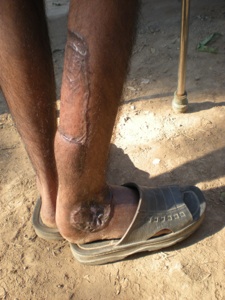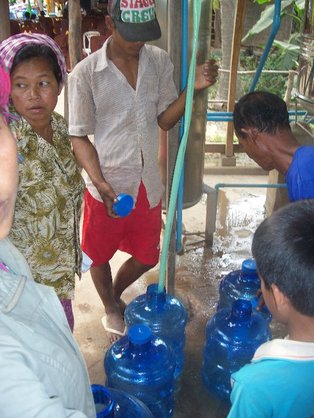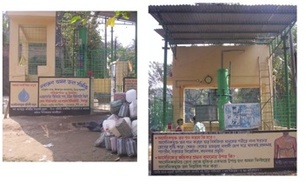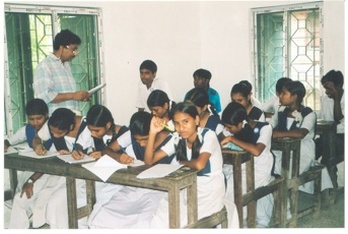Arsenic mitigationFrom Nepal in the north to Vietnam in the south, high levels of naturally present arsenic in groundwater affect much of the water in East and Southeast Asia. Unlike many water problems like iron contamination, arsenic neither tastes nor looks like spoiled water. It typically derives from natural deposits in the earth’s crusts and requires a chemical—not biological—treatment. This natural deposit has slow but deadly human consequences, which include scaling and pigmentation of the skin, stomach pain, nausea, vomiting, diarrhea, numbness in hands and feet, partial paralysis, blindness and other fatalities. Arsenic has also been linked to cancer of the bladder, lungs, skin, kidney, nasal passages, liver, and prostate.
Many people consume arsenic contaminated water without realizing it and grow to accept their slow health deterioration. The World Health Organization (WHO) has therefore deemed it a global public health problem, affecting more than 130 million people in 70 countries. In the United States of America, the Environmental Protection Agency sets safe arsenic levels at no more than 10 parts per billion. In some communities the Tagore-Sengupta Foundation has worked, levels as high as 800 parts per billion have been detected. This is a human rights issue and requires an international response. |

During the last ten years, Lehigh University in Bethlehem, PA, Bengal Engineering and Science University in Bengal, India, and Water for People in Denver, Colorado have responded by installing 175 community-based wellhead arsenic removal units in remote villages in the state of West Bengal, India. Each unit serves nearly 200 households in each community with approximately 7,000 liters of treated water produced per day, supplying nearly 1,000 villagers with arsenic-safe water. Moreover, each unit can provide water without requiring electricity or external addition of chemicals. Many of these units have been running satisfactory for several years under the supervision of a villagers’ committee in each community.
The easy-to-operate unit provides arsenic-safe drinking water using re-generable arsenic adsorbents and can be started or stopped with no real time lag. When the filter is exhausted, the absorbent material is regenerated (unlike most filters, which are simply discarded) through a simple process consisting of a well-aerated, coarse sand filter at a central location, thereby decreasing the waste volume by “cleaning” the adsorbents of collected arsenic and catching the leftover arsenic-sludge in the filter. The cleaned absorbent material is then returned to the water unit, filtering water as if the unit were new. This disposal technique, developed and validated under rural conditions, is scientifically more appropriate than dumping arsenic-loaded adsorbents into landfills, which is the typical practice in developed nations.
The easy-to-operate unit provides arsenic-safe drinking water using re-generable arsenic adsorbents and can be started or stopped with no real time lag. When the filter is exhausted, the absorbent material is regenerated (unlike most filters, which are simply discarded) through a simple process consisting of a well-aerated, coarse sand filter at a central location, thereby decreasing the waste volume by “cleaning” the adsorbents of collected arsenic and catching the leftover arsenic-sludge in the filter. The cleaned absorbent material is then returned to the water unit, filtering water as if the unit were new. This disposal technique, developed and validated under rural conditions, is scientifically more appropriate than dumping arsenic-loaded adsorbents into landfills, which is the typical practice in developed nations.
|
|
|
In West Bengal, one community’s small tariff for filtered water has produced enough economic wealth that the water committee hired a full time worker to maintain the unit. As the years passed and more money was collected, the committee elected to renovate the water distribution center by placing the unit in a covered pavilion and displaying a television to provide entertainment to the community members waiting in line. The water council, doubling its revenue between 2005 and 2009, is now organizing a micro-finance operation to encourage further innovation in the community. The opportunity emerging from the arsenic crisis is community-centric, organic, and local to their needs.
The Tagore-Sengupta Foundation encourages the development of social and economic wealth by finding the opportunity in every crisis. One fundamental piece to find opportunities where none are easily visible is education. |





